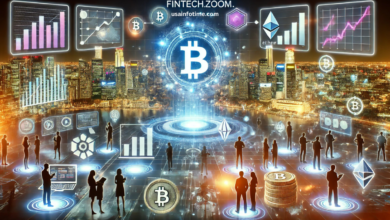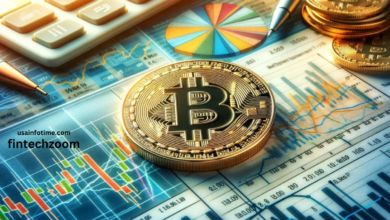Article: NFT Randomize – Exploring the World of Unique Digital Collectibles

Introduction
The digital world is rapidly evolving, with blockchain technology paving the way for new and exciting innovations. One area that’s gaining significant traction is NFTs or Non-Fungible Tokens. These unique digital assets represent ownership of specific items, from artwork to in-game items, and their popularity has skyrocketed in recent years. In this article, we’ll explore NFT randomize—a concept allowing creators and collectors to generate random, one-of-a-kind NFTs with distinct features. From how randomization works to its impact on the NFT market, this guide will provide an in-depth look at this emerging trend.
What is NFT Randomize?
NFT randomize refers to the process of creating NFTs with attributes generated through randomization, producing unique, unpredictable digital assets. This trend has led to collections like CryptoPunks, Bored Ape Yacht Club, and others that are distinguished by randomized features like colors, accessories, and backgrounds.
NFT randomization has revolutionized the digital collectible space, creating a sense of scarcity and individuality for each NFT. Whether you’re an artist looking to launch an NFT collection or a collector looking to invest in unique digital assets, understanding the mechanics of NFT randomization can be beneficial.
How Does NFT Randomization Work?
NFT randomization typically occurs through smart contracts on blockchain platforms like Ethereum, Solana, and Binance Smart Chain. Smart contracts execute code that defines the features of each NFT upon minting, meaning the characteristics of the NFT are determined at the time of creation. Here’s a step-by-step look at how it works:
- Defining Traits and Attributes
Creators set various attributes or traits that can be randomized within the NFT collection. These might include colors, accessories, backgrounds, poses, or specific details that make each NFT unique. - Implementing Randomization Logic
The smart contract uses algorithms to randomly select these traits, ensuring that each NFT minted has a unique combination of features. This process is often a mix of pre-defined parameters and random selection. - Minting the NFT
When a collector mints an NFT, the smart contract generates a one-of-a-kind token with a unique identifier and combination of traits. - Immutable Characteristics
Once an NFT is minted, its characteristics become part of the blockchain, making it impossible to alter. This immutability guarantees the NFT’s uniqueness and value. - Market Dynamics
Randomization also contributes to the rarity of certain traits within the collection. Some features may be more common, while others are rarer, making NFTs with specific combinations more valuable to collectors.
The Role of Smart Contracts in NFT Randomization
Smart contracts play a pivotal role in NFT randomization. They define the algorithms and parameters for each NFT’s traits and manage the minting process. Platforms like Ethereum’s ERC-721 and ERC-1155 standards allow for the creation of these unique tokens. With advanced programming languages such as Solidity, developers create logic that determines how traits are assigned, giving collectors a truly unique asset.
For instance, a collection of NFTs may have traits defined across categories like color, accessories, or rarity. The smart contract then randomly assigns these categories at minting, creating a digital collectible that’s one of a kind.
Benefits of NFT Randomization
NFT randomization has brought a fresh and exciting dynamic to the digital collectibles market. Here are some key benefits:
- Scarcity and Rarity
Randomization contributes to the scarcity of certain NFTs, as only a few in a collection may have rare attributes. This rarity boosts the NFT’s perceived value and creates a competitive market. - Enhanced User Engagement
The unpredictable nature of NFT randomization keeps collectors engaged, as they never know what unique asset they will mint. This element of surprise is a strong draw for collectors. - Creative Expression
Artists and creators can leverage randomization to create diverse, interesting collections that appeal to a wide range of collectors. This creative diversity is one of the key drivers behind NFT popularity. - Increased Market Demand
Rarity and unpredictability often result in increased demand. Many NFT collections that use randomization have seen their floor prices rise rapidly, creating opportunities for investors and traders.
Popular NFT Projects Using Randomization
NFT randomization is used in several high-profile collections. Here are a few examples:
- CryptoPunks
One of the earliest NFT collections, CryptoPunks includes 10,000 unique characters with randomized features like hats, glasses, and hairstyles. Their scarcity and the historical significance of the project have made them extremely valuable. - Bored Ape Yacht Club (BAYC)
This popular collection consists of 10,000 randomly generated apes with unique features. Randomization makes each ape distinct, and rarer attributes, such as specific hats or facial expressions, make some NFTs more sought after than others. - Meebits
From the creators of CryptoPunks, Meebits are 3D voxel characters with randomized features. This collection has attracted collectors interested in 3D, interactive NFTs with varied looks.
How NFT Randomization Impacts Value and Rarity
NFTs with rarer traits typically have higher market value, as collectors often value unique, hard-to-find attributes. NFT randomization creates tiers of rarity based on the likelihood of certain traits appearing. For example:
- Common Traits
Attributes that frequently appear in a collection are considered common. NFTs with only common traits tend to have lower market value. - Rare and Epic Traits
Some traits appear less frequently, making them more valuable. The most desirable NFTs in a collection often combine rare and epic traits, creating significant demand. - Legendary Traits
Legendary traits are the rarest and often reserved for a select few NFTs. Legendary NFTs are highly valuable and attract high bids in marketplaces due to their scarcity.
Randomization thus influences both the market dynamics and the perceived worth of each NFT in a collection. Collectors value NFTs with rare traits more, while those with common traits are easier to obtain at lower prices.
Challenges and Considerations in NFT Randomization
While NFT randomization brings many benefits, it also comes with certain challenges. Here are a few:
- Algorithm Complexity
Developing randomization algorithms that create balanced, interesting collections can be challenging. Overly complex algorithms may slow down the minting process, while simplistic ones may result in too many similar NFTs. - Fairness and Transparency
Ensuring transparency is essential in NFT randomization, especially in avoiding any manipulation that could give certain collectors an advantage. - Environmental Impact
Many NFT platforms, especially those on Ethereum, have faced criticism for high energy consumption. Efforts are underway to transition to more eco-friendly solutions, such as proof-of-stake networks, but environmental concerns remain a challenge.
Future Trends in NFT Randomization
The future of NFT randomization is likely to be marked by continued innovation. Here are some potential trends:
- Interactive and Dynamic NFTs
With advances in blockchain technology, interactive and dynamic NFTs are becoming more popular. Randomization could extend to traits that evolve or respond to user actions. - Cross-Platform Randomization
NFTs may soon interact across different blockchain networks, allowing for greater versatility. Cross-platform compatibility could create new opportunities for artists and developers to expand NFT collections. - Decentralized Gaming and Metaverse Applications
As the metaverse expands, NFT randomization will likely play a significant role in virtual worlds. Randomized NFTs could represent characters, land parcels, or in-game assets with unique abilities, enhancing the gaming and social experiences in digital realms.
Conclusion
NFT randomization has introduced a new level of creativity and rarity to the digital collectibles market, attracting both seasoned collectors and newcomers. By combining blockchain technology with unique trait generation, creators can build collections that are exciting, valuable, and endlessly diverse. As blockchain technology and the NFT ecosystem continue to evolve, we can expect even more innovative approaches to NFT randomization that will further drive demand and engagement.
Whether you’re an artist, developer, or collector, understanding the mechanics and appeal of NFT randomization can be highly beneficial. By recognizing the value of rarity and the art of unpredictability, NFT randomization opens a world of possibilities for digital asset creation and collection.
FAQs about NFT Randomize
- What does NFT randomization mean?
NFT randomization is the process of assigning unique traits or features to NFTs through algorithms, resulting in unpredictable, one-of-a-kind digital assets. - How does randomization impact the value of an NFT?
Rarer traits produced by randomization often lead to higher market value, as collectors seek unique and limited NFTs within a collection. - What role do smart contracts play in NFT randomization?
Smart contracts on blockchain platforms execute the algorithms that randomize traits, ensuring each NFT minted is unique and immutable. - Are there risks associated with NFT randomization?
Yes, creating fair, balanced randomization algorithms can be challenging, and transparency is crucial to prevent manipulation within the NFT market. - What are some popular NFT projects using randomization?
Projects like CryptoPunks, Bored Ape Yacht Club, and Meebits utilize randomization to produce diverse, collectible digital assets, each with unique traits.
This guide provides an overview of NFT randomization, showcasing how it contributes to the value, engagement, and innovation within the NFT ecosystem. By understanding the mechanics and applications of randomization, both creators and collectors can make informed decisions in the fast-evolving world of digital collectibles.
you may also read
usainfotime.com





